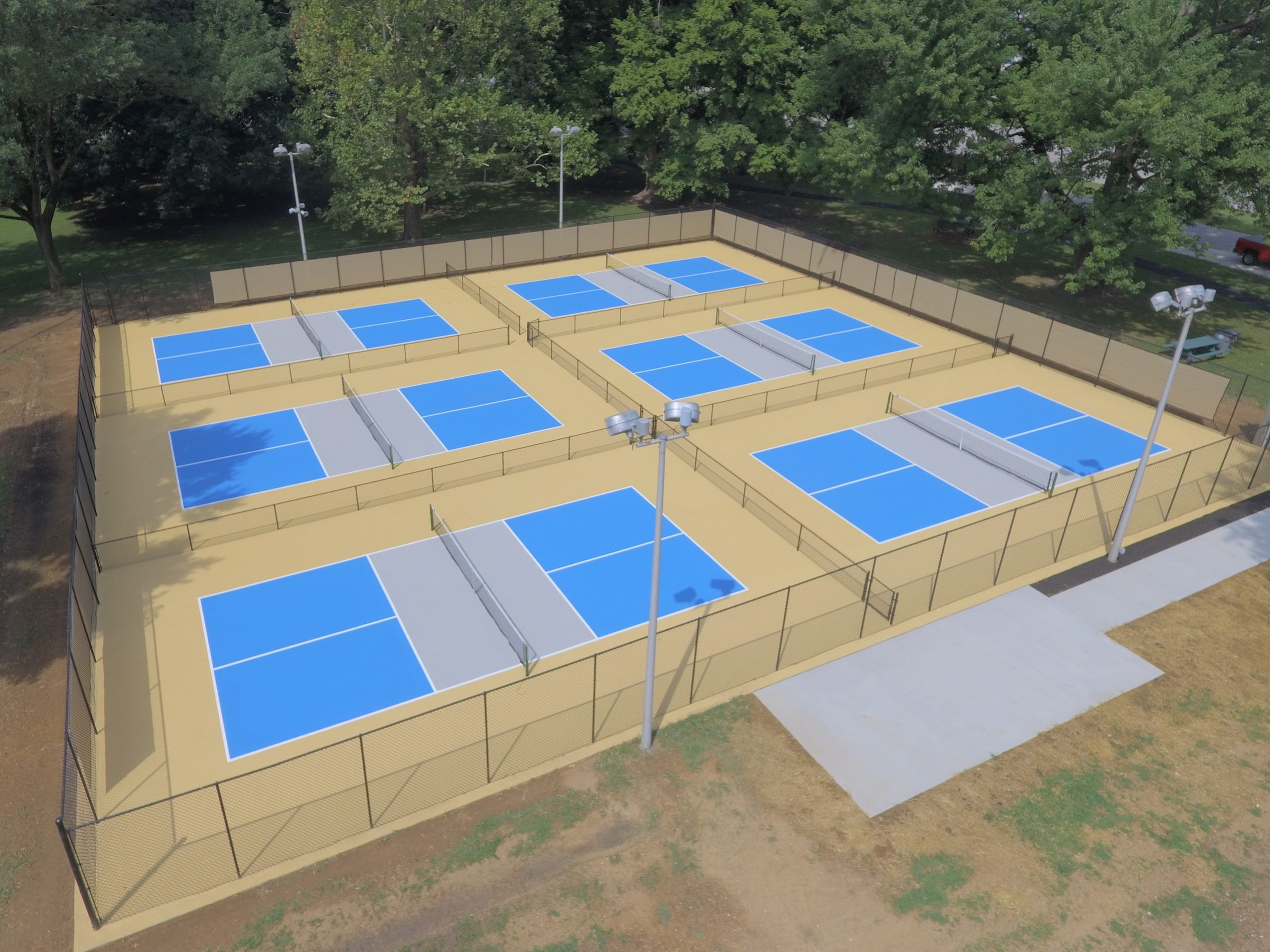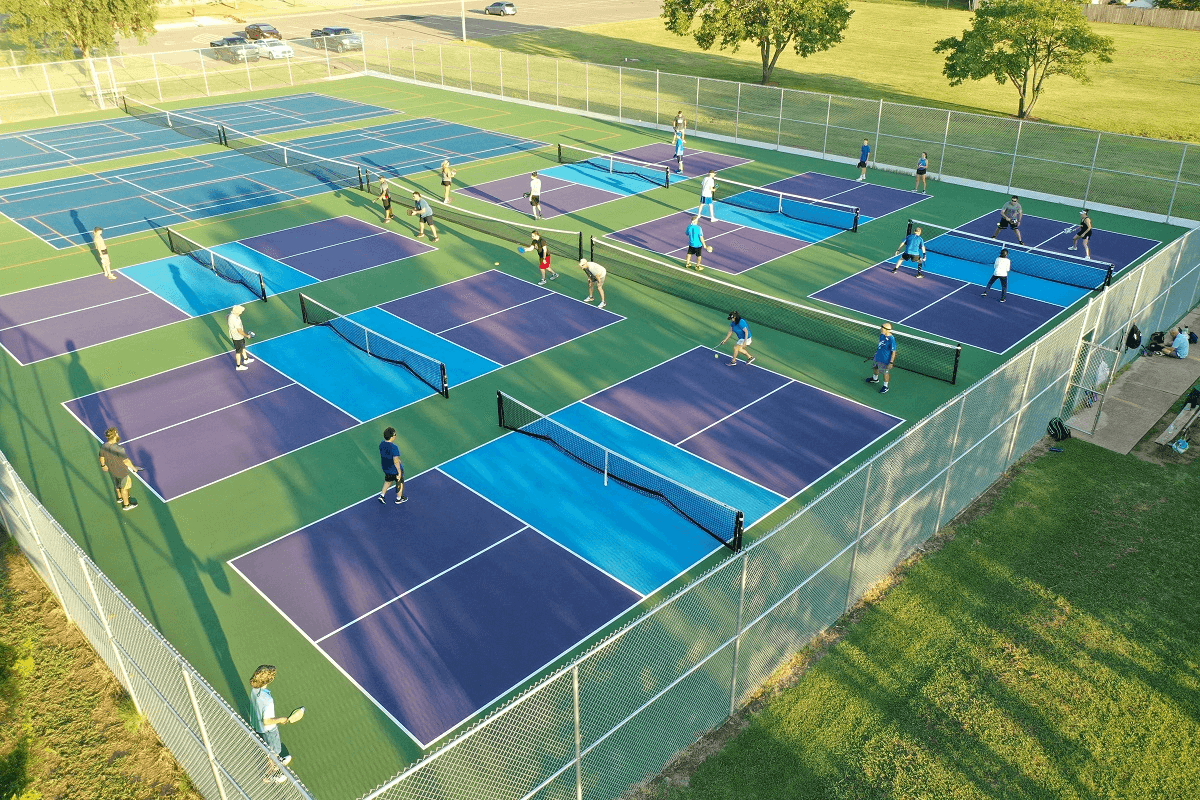The Leading Pickleball Judiciaries Layout & Building Specialists in Illinois and Midwest
The Leading Pickleball Judiciaries Layout & Building Specialists in Illinois and Midwest
Blog Article
Secret Consider the Building of Pickleball Judiciaries: From Website Option to Last Coatings
The construction of pickleball courts includes a variety of vital aspects, beginning with the option of an appropriate site that balances accessibility with environmental factors to consider. Vital components such as court dimensions, surface area materials, and drain systems dramatically impact not just the top quality of play however additionally the longevity of the facility. Moreover, focus to lighting and ending up touches can elevate the general experience for gamers and viewers alike. Understanding how each of these components interrelates might reveal understandings that are commonly overlooked, prompting a better assessment of ideal practices in court construction.
Website Choice Requirements
When beginning on the building and construction of pickleball courts, it is necessary to pin down the site choice criteria that will ensure optimal playability and accessibility. The area needs to be conveniently obtainable for gamers, ideally situated near residential locations or area facilities, to motivate engagement.
In addition, the surface must be level and secure, as irregular ground can cause security hazards and impact gameplay. Appropriate drain is also critical; picking a site with good water drainage will help maintain court conditions throughout negative weather.
An additional important factor to consider is the schedule of energies. Access to electrical power and water is necessary for lights and maintenance functions. Additionally, proximity to auto parking centers is vital, facilitating simple access for gamers and viewers alike.
Ecological elements can not be overlooked; all-natural color from trees can improve gamer comfort, while direct exposure to dominating winds might interrupt play. Last but not least, zoning policies and area support must be considered to make sure that the project aligns with neighborhood guidelines and gets the support it needs for effective execution. By meticulously assessing these requirements, stakeholders can develop a welcoming and functional environment for pickleball lovers.
Court Capacities and Design
To make sure optimum gameplay and adherence to regulations, the dimensions and design of pickleball courts need to be carefully defined. A conventional pickleball court gauges 20 feet in size and 44 feet in size for both songs and increases play. The recommended layout includes a non-volley zone, typically referred to as the "kitchen area," prolonging 7 feet from the internet on either side. This area is vital, as it affects gamer positioning and shot choice - Illinois and midwest.
The web elevation is evaluated 36 inches at the sidelines and 34 inches at the center, producing a small dip that affects ball trajectory. Court markings are just as vital; lines need to be 2 inches vast and unique in color to guarantee visibility.
In addition, a barrier area surrounding the court is advisable, typically expanding 5 to 10 feet past the sidelines and baselines to accommodate gamers' motions and improve safety. Correct design and dimensions not just make sure compliance with official laws however also boost the general playing experience, accommodating both leisure and competitive play. Cautious preparation in these areas is extremely important to the effective building and construction of pickleball courts.
Surface Area Material Options
Picking the best surface product for pickleball courts is essential for ensuring ideal player efficiency and safety. The selection of surface can dramatically impact gameplay, consisting of sphere bounce, grip, and player convenience.
There are several alternatives available, each with its distinctive qualities. Asphalt is a preferred choice because of its resilience and reduced maintenance demands. It gives a solid having fun surface site here area that can endure numerous climate condition but may call for periodic resurfacing.
Concrete is one more extensively used material, supplying excellent durability and a smooth coating. It permits constant sphere bounce yet can be hard on players' joints, making it much less preferable for long-term play without proper padding.
For those looking for boosted comfort and shock absorption, cushioned acrylic surfaces provide a sensible alternative. These surfaces integrate a base layer with an acrylic topcoat, supplying boosted grip and a softer feel, sites which is advantageous for minimizing the threat of injuries.
Last but not least, artificial turf is gaining traction, especially for multi-purpose facilities. Its adaptability and reduced upkeep requires make it an eye-catching alternative, though it might not provide the same ball response as conventional difficult courts. Cautious consideration of these choices will guarantee an ideal playing environment.
Drainage and Lighting Considerations
Proper water drainage and reliable lights are crucial parts in the building and construction of pickleball courts, dramatically affecting both playability and security. Sufficient drainage systems prevent water accumulation, which can bring about unsafe surfaces and damage to the court framework. A properly designed drain plan incorporates sloped surface areas and proper materials to help with water flow far from the playing area - Illinois and midwest. This not only maintains the stability of the court but also decreases downtime because of poor climate condition.
Lighting is just as vital, specifically for courts meant for evening use. The placement of illumination components ought to be strategically prepared to remove shadows and provide even circulation of light throughout the court.

Final Finishes and Upkeep
After attending to water drainage use this link and illumination factors to consider, interest transforms to the last coatings and ongoing upkeep of pickleball courts. Common alternatives consist of acrylic coverings and specialized sports surfaces that offer optimum traction and padding.

Seasonal upkeep may include resurfacing every couple of years, relying on usage and environmental variables. Appropriately preserving nets, court lines, and surrounding locations is just as important to provide a risk-free and delightful having fun experience. By buying quality surfaces and adhering to an organized upkeep schedule, facility owners can ensure their pickleball courts remain in superb condition for many years ahead.
Final Thought
Finally, the successful building and construction of pickleball courts hinges on careful interest to a number of vital factors. Website choice must prioritize availability and terrain stability, while court dimensions and design need to comply with optimum standards for gameplay. The option of surface material significantly affects player safety and performance. Additionally, reliable drainage and appropriate lights add to court longevity and exposure. Lastly, quality surfaces and a robust maintenance timetable are crucial for maintaining the court's problem, boosting the total experience for gamers and viewers alike.
Report this page